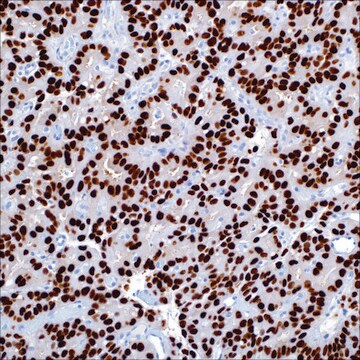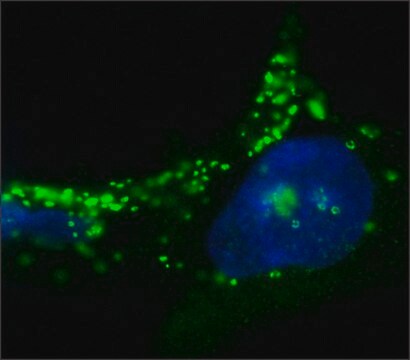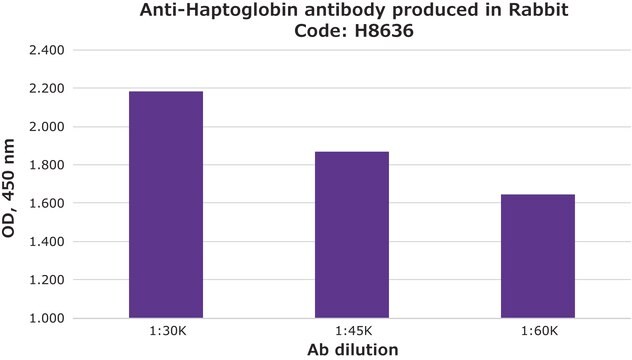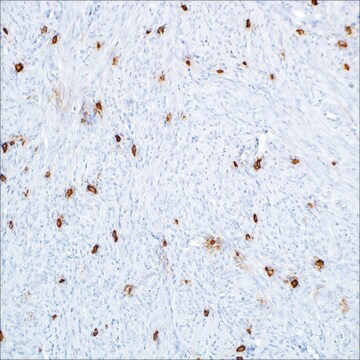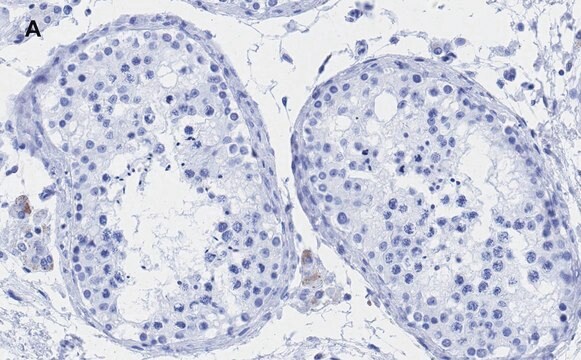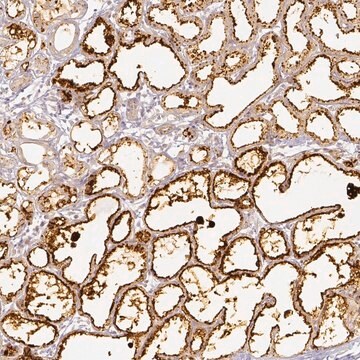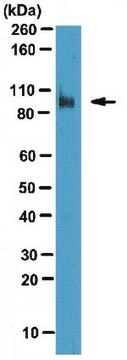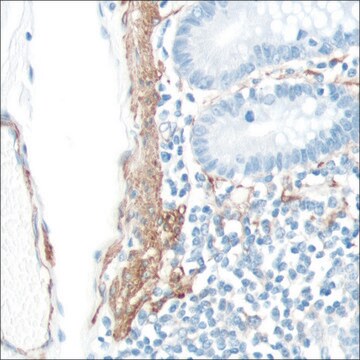393A-1
Adipophilin Rabbit Polyclonal Antibody
About This Item
Productos recomendados
origen biológico
rabbit
Nivel de calidad
100
500
conjugado
unconjugated
forma del anticuerpo
Ig fraction of antiserum
tipo de anticuerpo
primary antibodies
clon
polyclonal
descripción
For In Vitro Diagnostic Use in Select Regions (See Chart)
formulario
buffered aqueous solution
reactividad de especies
human
envase
vial of 0.1 mL concentrate (393A-14)
vial of 0.5 mL concentrate (393A-15)
bottle of 1.0 mL predilute (393A-17)
vial of 1.0 mL concentrate (393A-16)
bottle of 7.0 mL predilute (393A-18)
fabricante / nombre comercial
Cell Marque™
técnicas
immunohistochemistry (formalin-fixed, paraffin-embedded sections): 1:25-1:100
control
sebaceous neoplasms (intracytoplasmic lipid droplet)
Condiciones de envío
wet ice
temp. de almacenamiento
2-8°C
visualización
membranous
Información sobre el gen
human ... PLIN2(123)
Categorías relacionadas
Descripción general
Of 25 sebaceous carcinomas, 23 (92%) were also labeled with a similar pattern. Additionally, in cases of poorly differentiated sebaceous carcinoma (n=11), in which sebaceous differentiation could not have been reliably interpreted in H&E sections, adipophilin highlighted the sebocytes with a strong membranous labeling of intracytoplasmic lipid droplets in 9 of 11 cases (82%). Moreover, 10 of 10 (100%) xanthelasmas, 9 of 10 (90%) xanthogranulomas, 6 of 6 (100%) xanthomas, and 9 of 13 (63%) metastatic renal cell carcinomas were also weakly-to- moderately positive for adipophilin. Expression of adipophilin with a membranous pattern of staining was not seen in any of the other clear cell lesions of the skin, including basal and squamous cell carcinomas, trichilemmomas, clear cell hidradenomas, or balloon cell nevi. Interestingly, a nonspecific granular uptake of anti-adipophilin was seen in adjacent macrophages, keratohyalin granules of epithelial squamous cells, and some tumor cells. Therefore, this anti-adipophilin is suitable for immunostaining formalin-fixed, paraffin-embedded tissue and is helpful in the identification of intracytoplasmic lipids, as seen in sebaceous lesions. It is especially helpful in identifying intracytoplasmic lipid vesicles in poorly differentiated sebaceous carcinomas in challenging cases such as small periocular biopsy specimens.
Calidad
 IVD |  IVD |  IVD |  RUO |
Ligadura / enlace
Forma física
Nota de preparación
Otras notas
Información legal
¿No encuentra el producto adecuado?
Pruebe nuestro Herramienta de selección de productos.
control
Certificados de análisis (COA)
Busque Certificados de análisis (COA) introduciendo el número de lote del producto. Los números de lote se encuentran en la etiqueta del producto después de las palabras «Lot» o «Batch»
¿Ya tiene este producto?
Encuentre la documentación para los productos que ha comprado recientemente en la Biblioteca de documentos.
Artículos
Immunohistochemistry (IHC) techniques and applications have greatly improved, dermatopathology is still largely based on H&E stained slides.This paper outlines ways in which IHC antibodies can be utilized for dermatopathology.
Nuestro equipo de científicos tiene experiencia en todas las áreas de investigación: Ciencias de la vida, Ciencia de los materiales, Síntesis química, Cromatografía, Analítica y muchas otras.
Póngase en contacto con el Servicio técnico